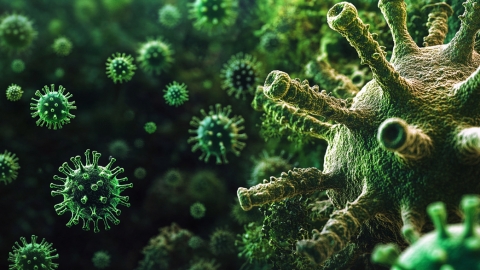What are the transmission routes of anthrax?
Under normal circumstances, the transmission routes of anthrax are well-defined and mainly include skin contact, respiratory inhalation, gastrointestinal ingestion, insect bites, and accidental laboratory exposure. A detailed analysis is as follows:
1. Transmission via Skin Contact
Skin contact is the most common route of anthrax transmission. When human skin has breaks or wounds, contact with infected animal carcasses, fur, secretions, or contaminated soil can allow *Bacillus anthracis* to enter the body through the wound. Once inside, the bacteria multiply locally in the skin, causing redness, swelling, and blisters that progress to form a black eschar. In severe cases, the infection may spread systemically.

2. Transmission via Respiratory Inhalation
Inhaling dust or aerosols containing *Bacillus anthracis* spores—such as those generated during handling of infected animal hides or from airborne particles of contaminated soil—can allow spores to enter the respiratory tract. Once inhaled, the spores may germinate into active bacteria, leading to pulmonary infection. Symptoms include fever, cough, and difficulty breathing. This form progresses rapidly and carries a high risk.
3. Transmission via Gastrointestinal Ingestion
Consuming undercooked meat from animals infected with *Bacillus anthracis*, or drinking contaminated water, allows the bacteria to enter the digestive tract. The bacteria then multiply extensively in the gastrointestinal tract, damaging the mucosal lining and causing symptoms such as nausea, vomiting, abdominal pain, and bloody stools. Severe cases may lead to sepsis.
4. Transmission via Insect Bites
Certain blood-feeding insects, such as flies and ticks, may carry *Bacillus anthracis* after feeding on infected animals. When these insects subsequently bite humans, they may transmit the bacteria, causing infection. However, this mode of transmission is relatively rare and typically occurs in areas experiencing severe animal outbreaks.
5. Accidental Laboratory Transmission
During laboratory research involving *Bacillus anthracis*, improper procedures—such as failure to wear proper protective equipment, leakage of lab instruments, or incorrect sample handling—may expose staff to direct contact with or inhalation of the bacteria, resulting in infection. Although this type of transmission is uncommon, it poses a direct threat to laboratory personnel.
In addition, individuals working in animal husbandry, slaughterhouses, and fur processing industries should strengthen protective measures to avoid direct contact with suspicious animals or animal products. Environmental disinfection should also be prioritized, with regular cleaning of workplaces to reduce the risk of infection.







